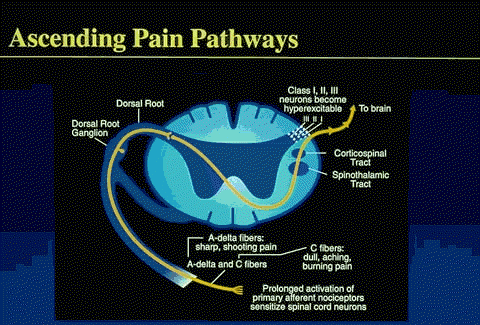-
C Fibers are small, unmyelinated
nerves with slow conduction velocities that carry
dull, aching burning pain impulses.
-
Thinly myelinated A afferent
fibers carry fast, sharp, shooting pain
sensations and are most integral to the
propagation of mechanical pressure stimuli from
muscles, joints, and bone.
-
Compared with these fibers, C
afferent fibers have a higher threshold for
mechanical stimuli and a smaller field of
reception.
-
Both these classes of nociceptive
fibers ultimately synapse with neurons in the
dorsal horn of the spinal cord.
courtesy of Roxane Pain Institute used
with permission
|
